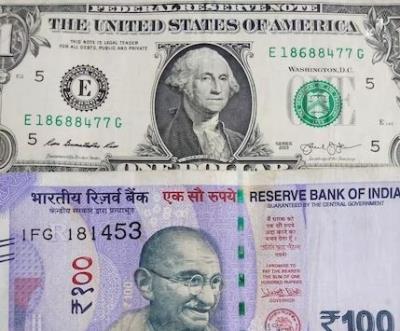The US has removed India from its currency manipulation monitoring list and made the announcement while Treasury Secretary Janet Yellen was in New Delhi to boost economic relations between the two countries.
The Department conveyed the decision in a report to Congress on Thursday that said India had met the criterion for removal from the list that monitors whether countries manipulate the rate of exchange between their currency and the US dollar to gain unfair competitive advantage in international trade or to exploit balance of payments adjustments.
The report said that Italy, Mexico, Thailand and Vietnam have also been removed from the Monitoring List, while China, Japan, Korea, Germany, Malaysia, Singapore, and Taiwan continue to be on it.
India met at least one of three criteria for dropping from the list over two reporting periods making it eligible for removal, as did the four other countries.
A coincidence as it was because others were also dropped, the release of the report came during Yellen's India visit to tighten the trade bonds as the US seeks global economic and manufacturing realignment after facing problems from overdependence on China.
Yellen spoke of the concept of "friendshoring" - bringing supply chains to friendly countries.
She said: "In a world where supply chain vulnerabilities can impose heavy costs, we believe it's important to strengthen our trade ties with India."
"India is one of our trusted trading partners," she said.
The three factors considered in putting a country on the monitoring list are the size of the bilateral trade surplus with the US, current account surplus, and persistent one-sided intervention in the foreign exchange market.
In addition, it also considers currency developments, exchange rate practices, foreign exchange reserve coverage, capital controls, and monetary policy.
The report did not specifically say what criteria India had met, but it mentions New Delhi's performance in the related fields.
The report said that India's foreign exchange reserves stood at $526.5 billion at the end of June, which is 16 per cent of the gross domestic product.
It said that India, like other countries covered in the report, continues to maintain "ample - or more than ample - foreign currency reserves based on standard adequacy benchmarks".
It also had a $48 billion trade surplus with the US, according to the report.
The report said that India ensured transparency in economic policy.
The department's criteria for one-sided currency intervention is net purchases of foreign currency in at least eight out of 12 months, totalling at least two per cent of the gross domestic product.
It said that India's net purchases of foreign currency in the fourth quarter were a negative 0.9 compared to the previous period, or $30 billion less.
Source IANS
